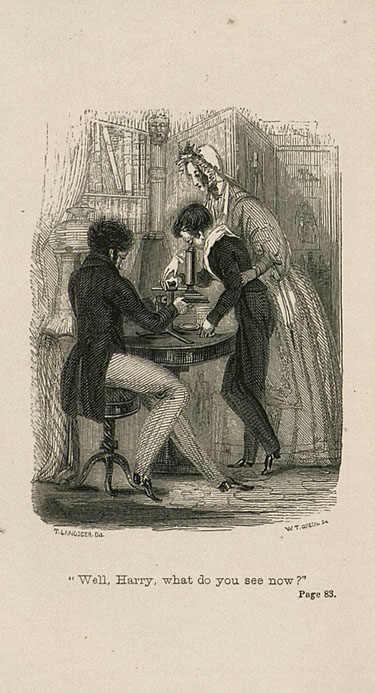
click image to view complete book
The domestic setting – house, hearth, and garden – was where most science writing and experimentation took place in the 19th century. Not only was the home the site of instruction for children, it also allowed for the comfortable and familiar dialogue between mothers responsible for education and their children. It was important to establish the home as a place of science no less significant than the natural world. In Maria Hacks’s Harry Beaufoy for example, both a leg of mutton and a trussed up chicken – items for the dinner table – offer evidence of common features in animal mechanics. The contraction of a bird’s foot, little Harry learns, using his dinner-to-be as an instructional tool, “is not effected by the choice of the bird, but by the tension or pulling of tendons, or cords, placed in its legs for that purpose.” Such are the wonders of the scientific world, which are as far away as the planets or as near at hand as supper.
Maria Hack (British, 1777-1844). Oh, Mamma, They Move, They Move from Harry Beaufoy, or, The Pupil of Nature. 1821. Harvey, Darton & Co. 15h4534. Baldwin Library of Historical Children’s Literature, Special & Area Studies Collections, George A. Smathers Libraries, University of Florida.
Maria Hack (British, 1777-1844). Well, Harry, What Do You See Now from Harry Beaufoy, or, The Pupil of Nature. 1821. Harvey, Darton & Co. 15h4534. Baldwin Library of Historical Children’s Literature, Special & Area Studies Collections, George A. Smathers Libraries, University of Florida.

